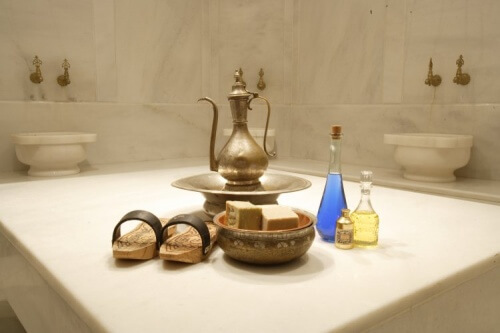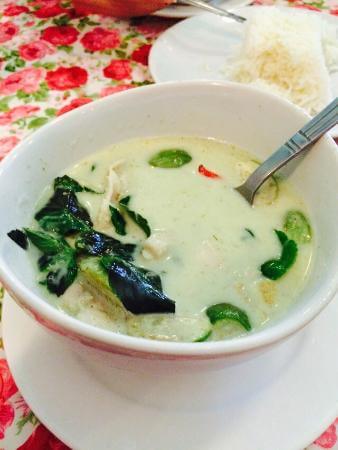
Top 5 ways to act like a local in Istanbul
Visit a Turkish Hamam
 Steam baths known as hamam or Turkish bath have been a part of Turkish life since the days of the Ottomans thousands of years ago. Hamams have three rooms: the hot room for steaming, soaking and massaging the body, the warm room for washing with soap and water and the cool room where you can take rest or even take a quick nap and also enjoy a glass of tea or a Turkish coffee. Locals will always find time to go for their weekly steam and scrub at a hamam as they are also social centres where people meet to chat. Every town in Turkey has at least one hamam, some are simple and cheaper whereas others in the big cities are historic, with fine marble architecture and grandly decoration. If you really want to experience life as a local ask your hotel to direct you to hamams the locals use and soak up the culture while you soak.
Steam baths known as hamam or Turkish bath have been a part of Turkish life since the days of the Ottomans thousands of years ago. Hamams have three rooms: the hot room for steaming, soaking and massaging the body, the warm room for washing with soap and water and the cool room where you can take rest or even take a quick nap and also enjoy a glass of tea or a Turkish coffee. Locals will always find time to go for their weekly steam and scrub at a hamam as they are also social centres where people meet to chat. Every town in Turkey has at least one hamam, some are simple and cheaper whereas others in the big cities are historic, with fine marble architecture and grandly decoration. If you really want to experience life as a local ask your hotel to direct you to hamams the locals use and soak up the culture while you soak.
Cruise the Bosphorus on public transport boats
The Bosphorus Strait is the world’s narrowest strait which is used for international navigation and links the Black Sea with the Sea of Marmara. The Bosphorus Strait is a beautiful waterway and gives tourists and locals alike a magnificent view of Istanbul’s iconic buildings; as it is lined with palaces, fortresses and parks. It is best to use Istanbul’s official ferry company Sehir Hatlari, as the locals would. It offers three fantastic tours to suit the time you have; the short tour which takes about two hours, the full Bosphorus tour which will take a few hours and in July and August night cruises are available.
Sip Turkish Tea
Tea is the most popular drink in Istanbul and is drunk by everyone and everywhere. Turks drink it for breakfast and carry on drinking it throughout the day. You will be offered Turkish tea in shops, bazaars, even banks. The Turks think of tea as one of life’s little luxuries. The traditional way to prepare tea is by brewing it in a small samovar style pot and it is kept hot for hours. Locals drink their tea black and very strong served in small tulip-shaped glasses. You can ask for more hot water to get it to the strength you want and add sugar to taste. Turks don’t add milk or lemon so try it the traditional way, but you can always ask for milk if you need it. Traditionally loose-leaf tea is used although tea-bags are available, but if you want to drink tea like a local it has to be loose-leaf, samovar brewed tea.
Eat Ekmek Arasi fish or Doner in bread with the locals
In Istanbul Street food or food you can eat quickly or on the go is popular. You will find many stalls and small restaurants selling foods like Ekmek Arasi. Ekmek is a simple sourdough bread. It is an everyday bread in Turkey and is the foundation of Turkish eating habits. It comes in all shapes and sizes; oblongs, circles, long tubes, plaits or small rolls. It can be glazed with egg yolk and sprinkled with poppy, nigella or sesame seeds. However, it is also delicious unglazed. Ekmek can be filled with many different flavours, such as meat, fish or vegetables. Many locals in Istanbul enjoy Ekmek when it is stuffed with delicious fresh fish and this is known as Ekmek Arasi. Enjoy!
Try the many soup houses with the locals
Soup is very popular in Istanbul, hence its many soup houses. Soup used to be eaten regularly for breakfast before the typical Turkish breakfast became popular. A Turkish meal usually starts with a thin soup known as Corba, but there are many different types of soups which are often named after their main ingredients mercimek corbasi – lentil soup or beyran corbasi – lamb broth. Soups are cooked in big metal bowls and meat soups are slow-cooked for hours to give them their rich, deep flavour. After a night out in the city some locals will drop into a soup house and eat tripe soup….if you don’t fancy that there are plenty of different soups for you to try both hot and cold.
https://www.directtraveller.com/blog/top-5-ways-act-like-local-istanbul/Uncategorized





